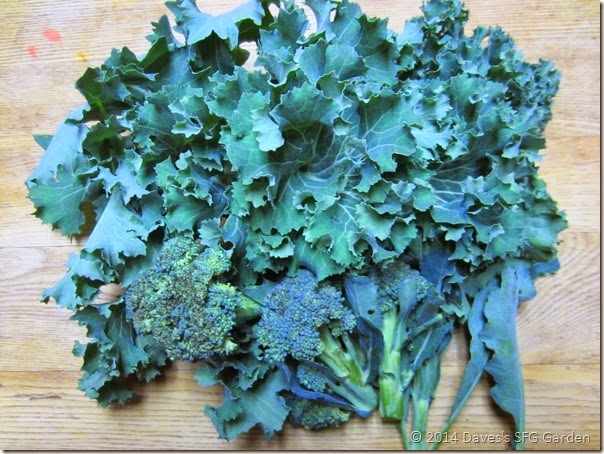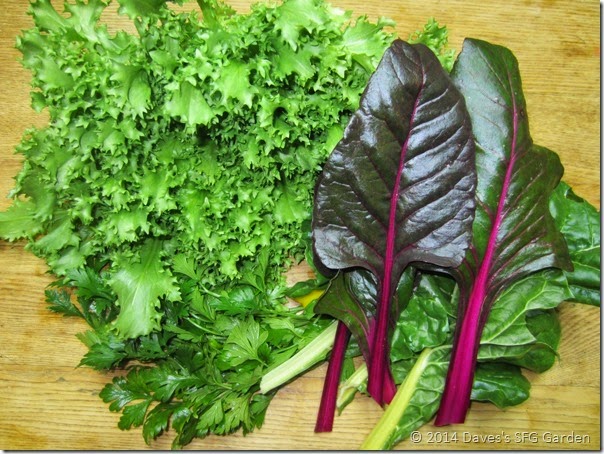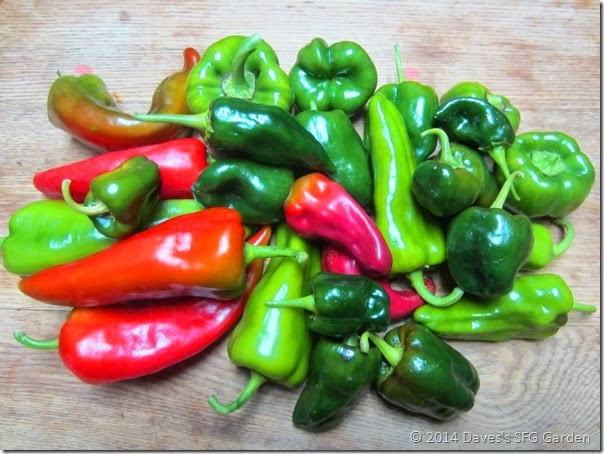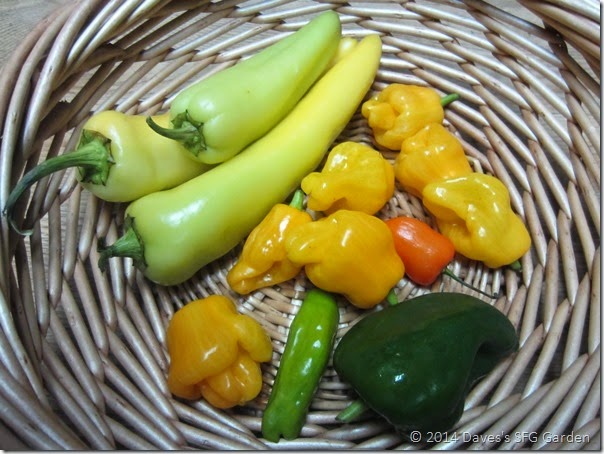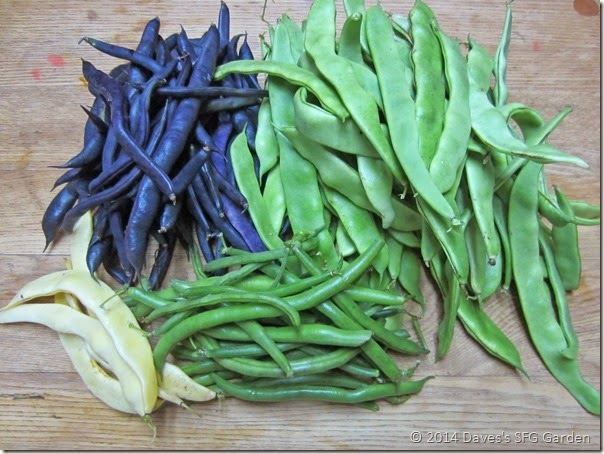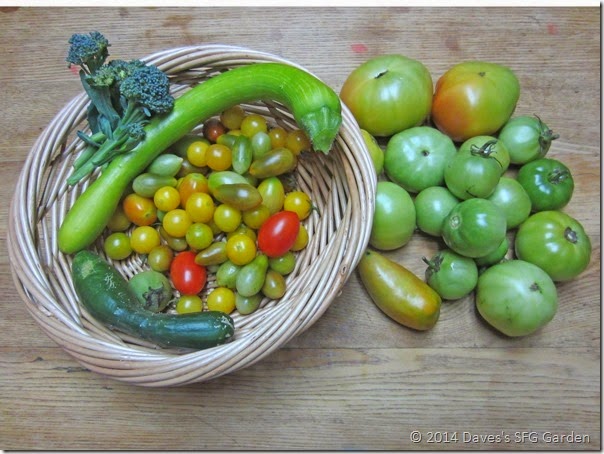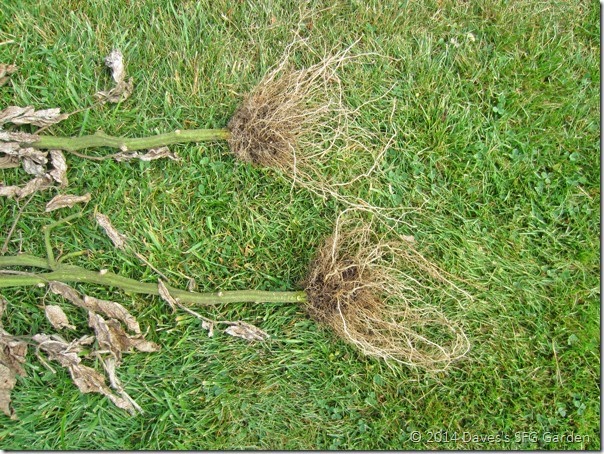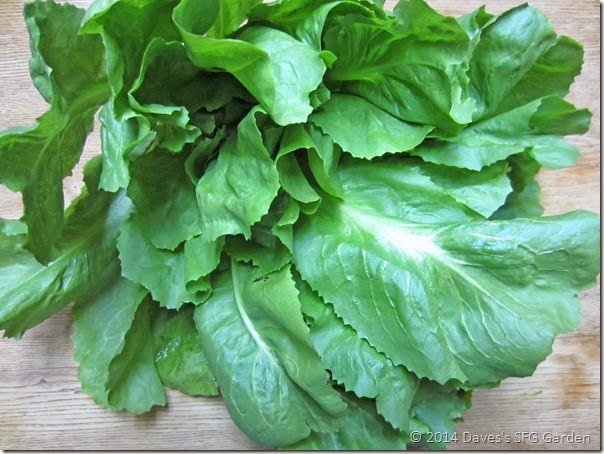It’s time to plant the garlic. This year I am ahead of myself. It’s only mid-October and I actually got it all planted. A couple of days ago I prepped the beds, pulling summer plants and weeds, then adding compost and fertilizer. This year I added a lot of organic compost (McEnroe’s, since I am out of my own). I also added rock phosphate, bone meal, and a general organic fertilizer (Tomato Tone, since I have a large bag of it).

The bed above was home to the bush beans this year, plus a row of cucumbers, so hopefully the beans helped fix some nitrogen in the soil. The amendments were blended in and the bed smoothed out. You can see the square foot markings I made to guide planting. This 4x4 foot bed has sixteen squares. I will be planting a row of four squares of four types of garlic.

I am using a spacing of 4 cloves per square this year, hoping to maximize bulb size. That gives a spacing of 6 inches in each direction. The official recommendation is 9 per square but I think that is going to affect size. I have used 5 and 6 in the past but this year I am going with 4 per square and hoping for large heads of garlic. Anyway, 64 heads from this bed is already a lot of garlic.
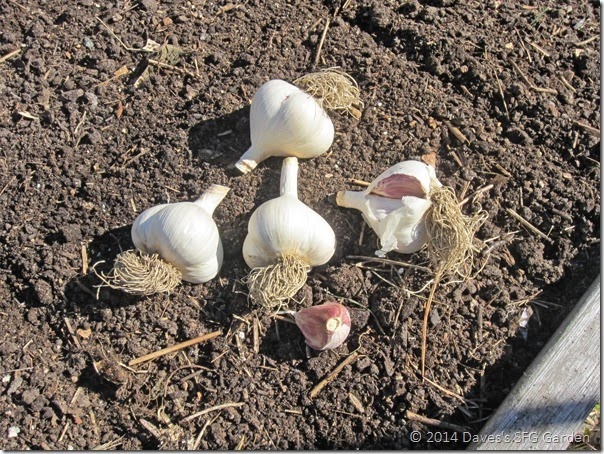
First in the ground, above, was the German Red rocambole garlic I bought last month at the Mount Desert Island Garlic Festival in Southwest Harbor. It was grown by Goosefooté Garlic in Irasburg, Vermont, who made the long trek to MDI for the festival. The heads were enormous with just four huge cloves per head. I purchased four heads so I had enough to plant four squares. Forget the dibble, you need a post hole digger to plant this garlic.

Next was another new garlic, Duganski, a purple stripe from Territorial. For planting I selected the best looking and largest of the cloves from the four heads I received. I documented before why I was not real happy with this shipment of garlic.The sheaths of a lot of the cloves were also loose, as you can see on the bottom cloves in the photo above. Anyway, I found enough decent cloves to plant my 4 squares and I hope the results are good.
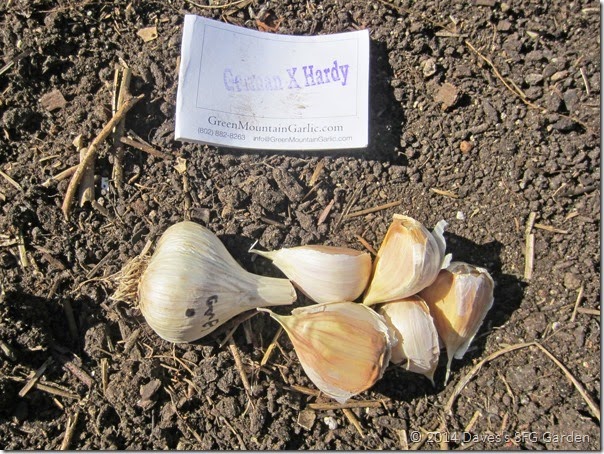
Next was German Extra Hardy, my own seed garlic from this year. Last year I was disappointed at planting time that the heads I set aside were soft and the cloves were turning yellow. This year the seed garlic I set aside was fine and the cloves were firm. Last year I had to discard enough cloves I only had enough for 3 squares, but this year I succeeded in planting 4 squares. So hopefully last year was an anomaly. I thought the bulbs I harvested this year were smaller but in separating cloves for planting, the individual cloves are quite large, so I am hoping for big heads next summer.
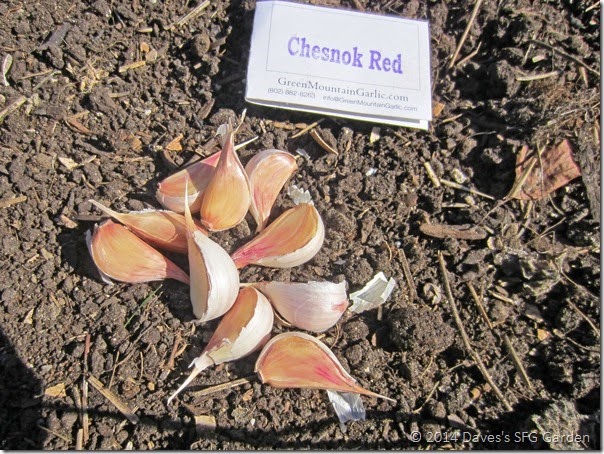
Finally for this bed, I put in my own Chesnok Red seed garlic, another purple stripe. This garlic has grown well for me and also keeps well. I think, again, that heads were a little smaller this year than the year before, but it’s a new year and I have great expectations from this one.

After planting the garlic, I mulched the bed with chopped straw. I really like this material, made for landscapers for seeded lawns. The brand I used here is called Mulch Master. The straw is chopped so individual pieces are small, making it easy to spread around under existing plants. It is heat sterilized to kill weed seeds and I have never had a problem with weeds using it. It is light, doesn’t mat up and it quickly decomposes by the end of the season. The mulch will help protect the garlic cloves from heaving this winter when the beds go through all the freeze/thaw cycles.
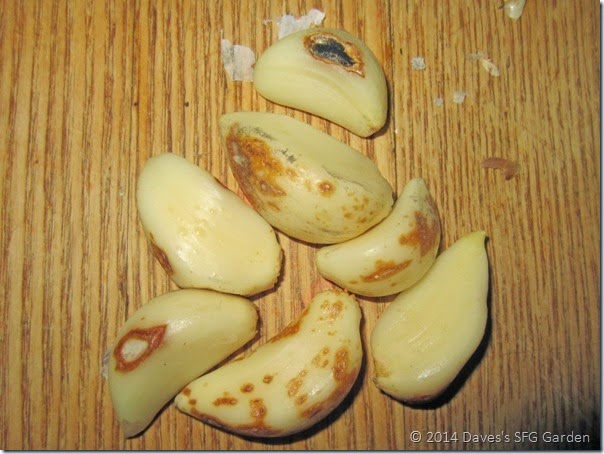
Finally, I headed home with all the unused cloves from my seed garlic, planning to freeze or dry the unused cloves. What a surprise when I started removing the skins from some of the cloves. I believe the garlic cloves above were from the Duganski heads. All of these were promptly discarded, while a few with one or two small spots were used after the spots were removed. Trying to figure out what these spots were, all I can come up with is these cloves are infected with Fusarium, also known as garlic basal rot. Notice that the color of the cloves is also yellowish when they should be white. Nice. So I just planted a row of diseased garlic in my bed, and that does not make me happy. Anyone have another, more hopeful, opinion on what these spots are?
Here is another question for those more experienced with garlic than I. Can you/do you plant garlic cloves without their sheaths? A lot of the sheaths were loose on some of the garlic, or were stuck to the neighboring clove and stripped when I separated the cloves. Those I took home to use. But in addition, if you want to avoid planting diseased cloves like those above, you have to remove the skins to see if the clove inside is healthy. I did not know these were affected or I would certainly not have planted them. Anyway, I am hoping for the best but moderating my expectations.
